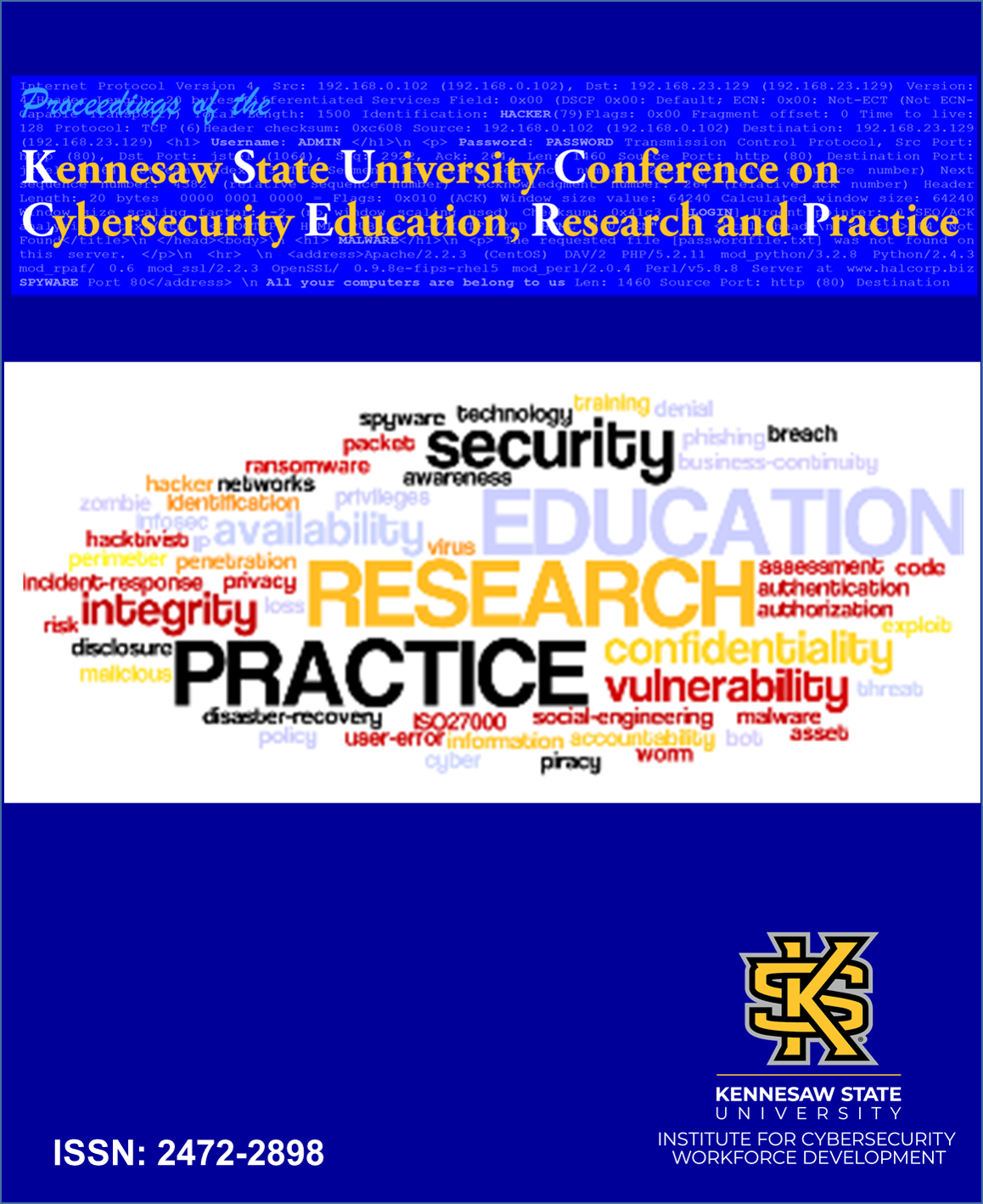Start Date
12-10-2019 11:55 AM
End Date
12-10-2019 12:20 PM
Location
KSU Center Rm 400
Abstract
The growing market of the mobile application is overtaking the web application. Mobile application development environment is open source, which attracts new inexperienced developers to gain hands on experience with applicationn development. However, the security of data and vulnerable coding practice is an issue. Among all mobile Operating systems such as, iOS (by Apple), Android (by Google) and Blackberry (RIM), Android dominates the market. The majority of malicious mobile attacks take advantage of vulnerabilities in mobile applications, such as sensitive data leakage via the inadvertent or side channel, unsecured sensitive data storage, data transition and many others. Most of these vulnerabilities can be detected during mobile application analysis phase. In this paper, we explore vulnerability detection for static and dynamic analysis tools. We also suggest limitations of the tools and future directions such as the development of new plugins.
Included in
Information Security Commons, Management Information Systems Commons, Technology and Innovation Commons
An Exploratory Analysis of Mobile Security Tools
KSU Center Rm 400
The growing market of the mobile application is overtaking the web application. Mobile application development environment is open source, which attracts new inexperienced developers to gain hands on experience with applicationn development. However, the security of data and vulnerable coding practice is an issue. Among all mobile Operating systems such as, iOS (by Apple), Android (by Google) and Blackberry (RIM), Android dominates the market. The majority of malicious mobile attacks take advantage of vulnerabilities in mobile applications, such as sensitive data leakage via the inadvertent or side channel, unsecured sensitive data storage, data transition and many others. Most of these vulnerabilities can be detected during mobile application analysis phase. In this paper, we explore vulnerability detection for static and dynamic analysis tools. We also suggest limitations of the tools and future directions such as the development of new plugins.


